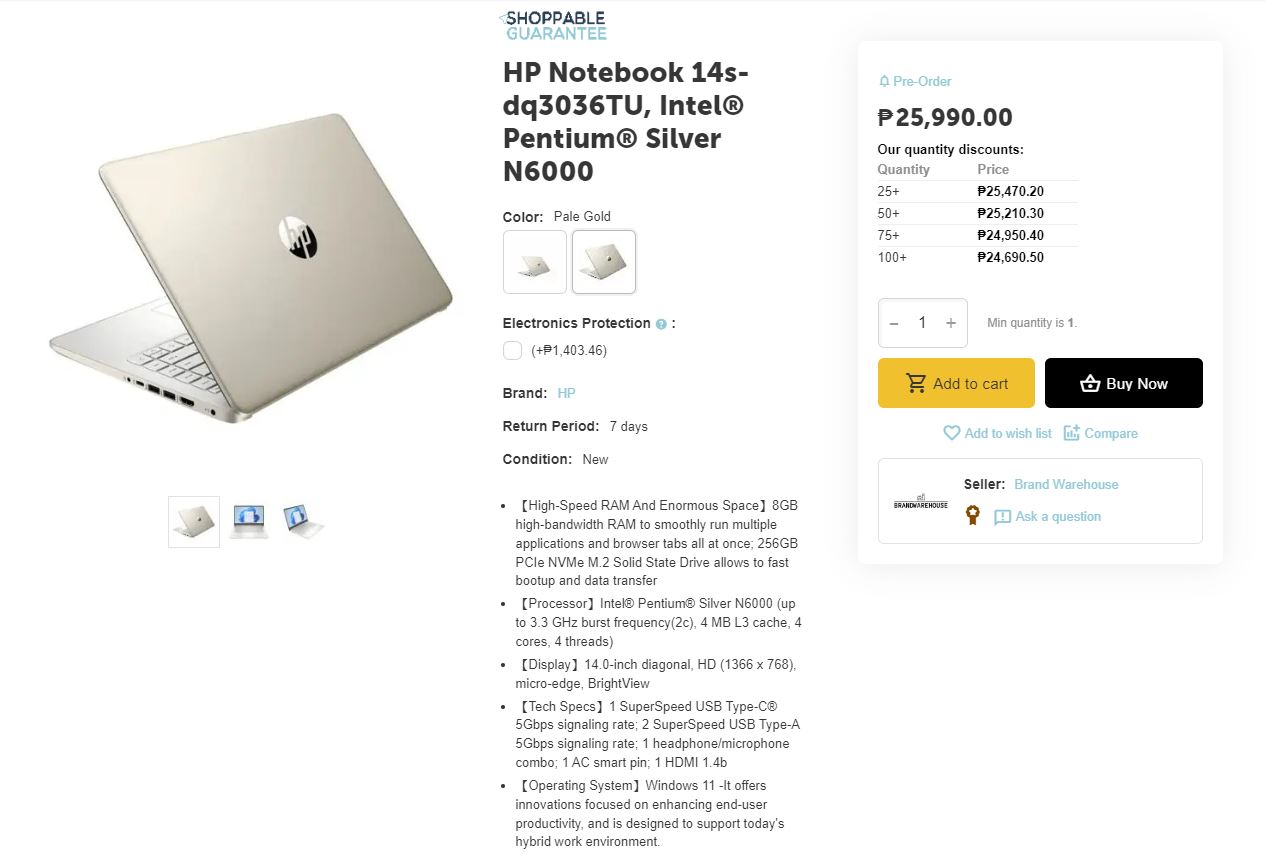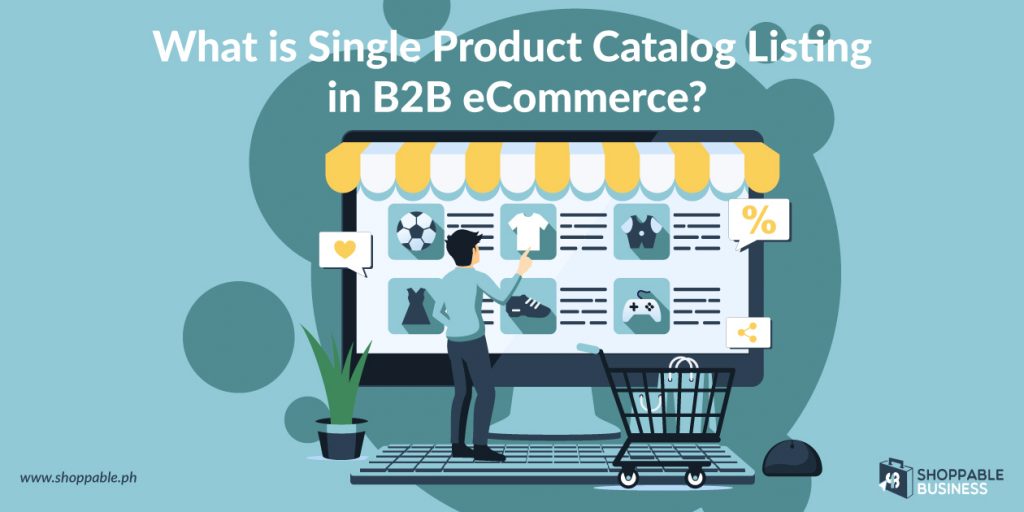

Ecommerce provides convenience to buyers and sellers online. The functionality and effectiveness of online product catalogs offer convenience for buyers to select and shop, while enabling sellers to easily list their products online. While online product catalogs are already highly effective, the demand for enhanced productivity and flexibility among online shoppers continues to evolve, just as it does for eCommerce. One particular innovation in eCommerce that has innovated the way businesses procure online is the concept of a single product catalog listing. In this article, we will talk about the functionality and benefits of single product catalog listing and how it evolves the way businesses buy in B2B eCommerce.
What is a Product Catalog
In earlier times, product catalogs can be seen in traditional printed materials such as a newspaper or delivered by mail. This provided customers with a list of available products and placed orders through phone, email, or fax.
As the world gets busier and people want commerce services to be quick, these product catalogs have transitioned to digital means, which online catalogs make its way to eCommerce.
Digitizing the way consumers and businesses shop has provided product catalogs with detailed information, high-resolution images, pricing, discounts, which is an evolution compared to traditional catalogs.
This shift has transformed B2B eCommerce, making online catalogs the front door of B2B sales. According to McKinsley, about 65% of B2B companies are now transacting online solely online, which is of great importance in eCommerce and product catalogs in B2B.
So, What is Single Product Catalog Listing?

Single product catalog listing is quite similar with the online product catalog seen in eCommerce, but it has a slightly different concept that has a great impact on the way businesses choose and buy products online.
Single product catalog listing provides convenience for buyers to easily find products in a seamless product page with its item description, specifications, images, pricing, discounts, together with other vendors selling the same product in one page.
This allows business buyers to contrast and compare pricing, discounts, and terms with other vendors in the platform, providing them a better selection of deals and discounts when they buy in bulk for their business.
On the other hand, sellers can benefit from a single product catalog listing feature by easily listing their products online, without having to re-create an item that already exists in the eCommerce marketplace product catalog.
How Does it Work in B2B eCommerce?
So, let’s say your business is looking for office equipment, a laptop perhaps, and you encounter its product page. You decided to purchase the laptop since it has the perfect specifications and hardware for your employees to accomplish their tasks with efficiency. You want the best deals and terms since you will be buying it in bulk. Now, this is where single product catalog listing is beneficial for businesses buying online.
Across a single product catalog, you can view multiple vendors selling the same product with different pricing discounts and deals. This allows you to find the right vendor that can acquire you the product while getting the best deals and terms, maximizing your procurement cost savings. It’s a win-win transaction between your business and the vendor.
Benefits of Single Product Catalog Listing for B2B buyers

- Easily find products
B2B buyers often have specific requirements for their purchases, and they already know what to buy. Single product catalog listings make it much simpler for B2B buyers to search for specific products they need. Buyers can quickly navigate through product catalogs and locate the exact item they’re looking for without sifting through unnecessary information.
A single product catalog listing feature enhances the convenience factor by making the process of finding products remarkably straightforward and efficient.
With traditional catalogs, buyers might find themselves drowning in countless products, spending valuable time sifting through irrelevant items in search of the exact item they need. However, single product catalog listings address this challenge head-on. It helps buyers to direct them to highly relevant products, saving buyers a lot of time and effort.
- Vendor comparison
When B2B buyers need to make decisions about which vendor to work with, having single product catalog listings enhances the decision-making process. Comparing and contrasting available vendors that can offer the best discounts on bulk purchases can help B2B buyers with efficient and informed purchasing.
Buyers can quickly identify the strengths and weaknesses of each vendor’s offerings, helping them choose the most suitable partner for their business needs.
Single product catalog listings allow B2B buyers to assess products offered by different vendors side by side. This makes it easier to compare features, specifications, pricing, and other relevant details in a straightforward manner, allowing buyers to gain negotiating power when working with vendors.
On the other hand, if a specific vendor ran out of inventory for a specific product you want to purchase, and can’t fulfill your order quantity, you can reach out to other vendors in the product catalog, making procurement easier without having to worry about looking for external suppliers and vendors.
- Integration with procurement process
Businesses are always on the go. Everything moves fast and being able to adapt to easier ways of working leads to more productivity and success.
B2B buyers often need to reorder miscellaneous office supplies such as paper reams, toner, ink, etc. on a regular basis. These items are everyday essentials that keeps the office functioning, which its availability is deemed important.
Imagine a scenario where your office needs to restock its office supplies. Traditionally, this might involve manually searching through various product listings, trying to recall the exact specifications, quantities, and details of each item. This process can be both time-consuming and can likely lead to errors, potentially leading to the purchase of incorrect or unnecessary items.
Integrating procurement allows buyers to quickly locate the products they’ve ordered before and initiate the reorder process with just a few clicks. This ensures that B2B buyers have access to up-to-date inventory information. This helps buyers avoid ordering products that are out of stock or unavailable.
- Order customization
Businesses as we know, has its own diverse needs in order for it to progressively grow. This diversity is magnified when it comes to the type and quantity of products required for various functions, projects, and areas of a business.
The concept of order customization in a B2B eCommerce marketplace steps in to bridge this gap, ensuring that B2B buyers can procure products that align perfectly with their varying requirements.
Some B2B products are highly configurable, allowing buyers to choose from various options or components, depending on terms with vendors. Single product catalog listings enable buyers to explore these customization possibilities and create products that precisely match their needs.
For larger orders, B2B buyers can customize products in bulk in a product catalog This is especially helpful when needing to apply similar customization options to a large quantity of items.
- Seamless purchasing
The traditional procurement process usually takes long before you make a purchase, and this can stun business productivity and potentially growth. Transforming digitized procurement into integrated systems can include automated approval workflows. This reduces delays in the purchasing process by ensuring that the right approvals are obtained efficiently.
For larger or custom orders, B2B buyers can initiate quotation requests seamlessly based on the information provided in single product catalog listings. This simplifies the negotiation process.
On the other hand, business buyers can set on-time delivery schedules, order tracking, live data analytics, that can help in making procurement easier than ever before.
A B2B eCommerce with Single Product Catalog Listing Technology

Single product catalog listing technology helps businesses to promote smarter and better procurement, maximizing cost savings, and improving their bottom line. A particular B2B eCommerce marketplace in the Philippines, Shoppable Business, has implemented a single product catalog listing technology where B2B buyers can take it easy with their procurement process.
From product selection through delivery, Shoppable Business can help streamline and eliminate the manual processes of traditional procurement.
Whether you’re a buyer or a seller with Shoppable Business, it can help your business look for the right products at first glance, saving you time in product selection. On the other hand, sellers can easily list an item without having to re-create an item that already exists in Shoppable Business’ product catalog.
Why Become a Seller in Shoppable Business
- Access to a large customer base – allowing businesses to expand their reach and increase sales
- Increased visibility and brand awareness – a platform for businesses to showcase their products/services and potentially attract new customers
- BNPL (Buy now, Pay later) – grow your ASP; buyers/companies can apply for a loan up to ₱150,000.00
Why Become a Buyer in Shoppable Business
- Wide product selection from different categories – a one-stop-shop solution for businesses’ procurement needs
- Save company time and money – Customized orders, RFQ for specific quantities, bundles, configuration, Track their orders, view purchase history.
- Need it now but limited budget – BNPL apply and get up to ₱150,000.00
Ready to digitize the way you buy and sell for your business? Whether you’re a buyer seeking procurement solutions or a seller looking to meet your customers’ needs, we will help you get started!





